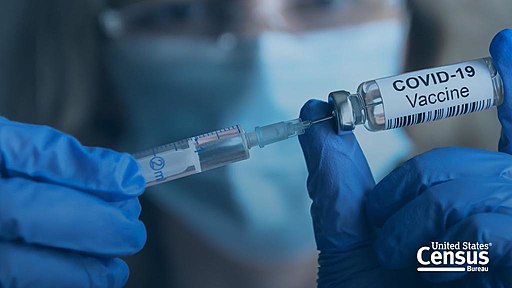Since COVID’s peak in 2020, what has been going on? Is it still on the rise? According to a recent article from LiveScience, the omicron subvariant of Eris, or EG.5.1, has been the leading cause of new COVID-19 cases in the U.S. In this research article, the data from a model of the Centers for Disease Control and Prevention (CDC) , from July 23 to August 5 of 2023, EG.5 was 17.3% of the new cases of COVID-19, which had previously only been 11.9% two weeks prior. Personally, seeing that jump in percentage within two weeks worries me about what harm this subvariant could cause. Additionally, more recently, EG.5 had a higher percentage of infection than any other omicron subvariant in the XBB lineage!
But the real question is, what is EG.5? How is it a subvariant, and why is it dominating the U.S.? Well, EG.5 was derived from a branch of omicron, an XBB variant. Yet, how it differs from omicron is what makes it EG.5 and what is allowing it to become so prevalent. EG.5 has a mutation in its spike protein that helps evade the body’s immune system. This spike protein called S:F456L may not only be able to escape our immune system, but the mutation in its subvariant Eris, EG.5.1, has an additional spike change, S:Q52H, that can be beneficial for the virus itself. To further the idea that the virus is harmful, the World Health Organization currently lists the variant as “under monitoring.” The article says that the genetics of the virus, EG.5, can theoretically boost its transmissibility, meaning that this virus is more easily spread than past variants. This article, to some relief, does not have enough evidence of it yet. Still, according to Johns Hopkins, the mutation is known to avoid the immunity you get after infection or vaccination. I think the idea that the virus is benefiting itself while infecting millions of people is, to say the least, cause for worry. Knowing that this immune system-bypassing virus could infect my grandparents or fellow students is unthinkable.
After hearing that, I wanted to know what that means. Is there going to be another outbreak? But there is no need to worry. In this article, using the Washington Post, it is displayed that EG.5 is only different because it has more ability to enter the cells and does not seem to be more lethal than other variants. Dr.K Srinath Reddy proposed that it had the same effect on the human body. As of July 2023, a variant XBB.1.16 was still more prevalent globally than EG.5, and the subvariant only accounted for 11.6%, previously 6.2% in June 2023, of the sampled SARS-CoV-2 sequences. Even though EG.5 is only 11.6%, it is still on the rise and will still infect more people in every country, so it is essential to know your options. According to YaleMedicine, updated vaccines such as Pfizer and Moderna are not a perfect match for eradicating this subvariant and that the vaccine was aimed for a close relative called XBB.1.5. But, the CDC states that the updated vaccines, since XBB.1.5 and EG.5 are so similar, should give a reasonable degree of protection and that the genetic code among omicron subvariants allows for cross-protection.
Now, as an AP Bio student, this change of structure in COVID is something we have talked about a lot recently. We discussed how the SARS-CoV0-2 virus comprises five main parts: spike proteins, membrane proteins, viral genome, nucleocapsid protein, and envelope protein. To explain these briefly, the spike proteins, membrane proteins, and envelope proteins are on the virus’s surface. The nucleocapsid protein protects the RNA, the viral genome. For this particular variant, I want to speak about the spike proteins and how, in AP Biology, we learned that these spike proteins recognize membrane-bound proteins of human cells and bind to them. Since this is an omicron variant, it follows a Receptor-Mediated Endocytosis pathway, a form in which receptor proteins on the surface capture and encapsulate specific molecules. This makes it more infectious. Once the omicron virus senses the membrane-bound protein of ACE2, it can enter the cell. This works because the omicron variant uses the ACE2 protein to become an endosome, enter the cell by endocytosis, and then break through Receptor-Mediated Endocytosis.
Contrary to the more extended version for SARS-CoV-2, how a transmembrane protease serine 2 cuts the spike protein in a specific location to which the protein will then undergo changes to insert itself into the cell membrane, the omicron version skips these steps to be able to go straight into the cell. The ability to skip these steps also connects to my article because it says the EG.5 subvariant can enter cells even more quickly. At this faster rate, this process can be hazardous and can spread much more quickly, causing more death and destruction. Therefore, learning this in AP Biology and how this process works allowed me to realize how bad this variant can be if the cross-protection is insufficient! But, please, if you are an AP Bio student like me, let me know what you think. Do you think this is more dangerous than portrayed? What do you think we should be doing!?





Leave a Reply